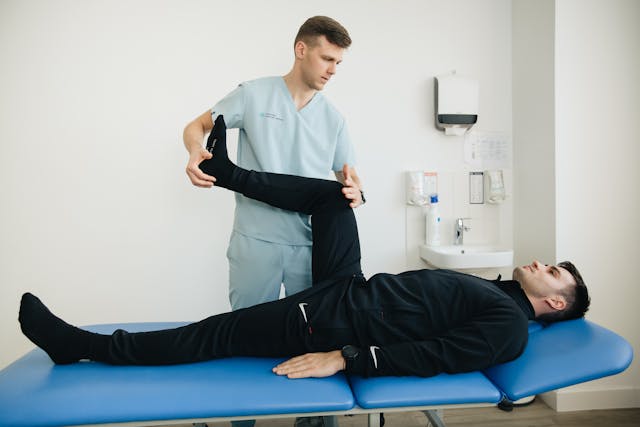You may need to go to physiotherapy sessions on a regular basis to heal from an injury or deal with chronic pain. But it might be hard for older people, people with mobility challenges, or people who are recovering from surgery to get to a clinic. In-home physiotherapy brings professional care right to your home, giving you convenience, safety, and personalised treatment without losing efficacy.
Why physiotherapy at home is important
A lot of individuals have trouble going to their regular physiotherapy visits because they can’t get there or because of health problems. The in home physiotherapy fills this gap by providing the same high-quality service as a clinic, but without the burden of having to go there. Professional physiotherapists look at your home to come up with workouts and ways to improve your mobility that fit into your regular life.
Physiotherapy at home also helps you heal faster. Patients feel more at ease and calm when they are treated in a place they know, which can lead to more participation with exercises and better overall results. It’s a great option for people who are recovering from surgery, dealing with a long-term illness, or requiring rehab after an injury.
What Home Physiotherapy Can Do for You
Physiotherapy at home includes a lot of different treatments, such as manual therapy, therapeutic exercises, pain management strategies, and training to help you move around. Physiotherapists can change the equipment and exercises to fit your home so that they are safe and effective.
In-home sessions also often teach patients and their carers things. Physiotherapists show you how to move, stand, and exercise correctly, and you can keep doing these things between appointments. Patients can keep making progress and stay independent in their recovery path because of this personalised care.

The Benefits of Choosing Physiotherapy at Home
The best thing about physiotherapy at home is that it’s easy to go to. Patients can get professional care on a regular basis without having to leave their homes, which makes it simpler to stick to their rehabilitation regimens.
Another big plus is safety. Physiotherapists can find possible dangers in the house and advise changes or assistive devices to keep people from falling and becoming hurt. This method is especially useful for older people or people who have trouble moving about.
Physiotherapy at home also fosters personalised care. Physiotherapists can focus completely on the patient’s demands during one-on-one sessions. They can also closely assess progress and change treatment programs as needed. This kind of care frequently leads to speedier healing and greater long-term benefits.

How to Find a Physiotherapist Who Will Come to Your House in Greensborough
When choosing an in-home physiotherapy service in Greensborough, be sure to look for practitioners who are qualified, have a lot of experience, and have good recommendations. A professional physiotherapist will carefully look at your issue, make a personalised treatment plan, and give you advice on how to change your lifestyle and do exercises to help you get better.
Find out if the provider has flexible hours and good communication. In-home physiotherapy is easy, effective, and supportive because you can change the sessions based on your progress and availability.
People who want expert care but don’t want to deal with the hassle of going to a clinic can consider in-home physiotherapy. It offers a safe, easy, and personalised way to get better, helping people get their mobility back, feel less pain, and enhance their quality of life overall.
In-home physiotherapy gives people in Greensborough who are suffering with an injury, recovering from surgery, or living with a chronic disease expert help and support in a setting they are comfortable with. Patients can recover faster, stay independent, and stay healthy for a long time by getting hands-on treatment, learning, and personalised exercises.





